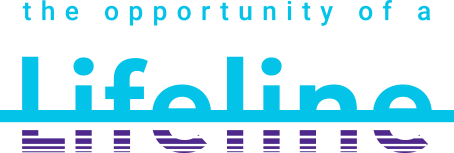
Useful Budgeting Tools
Dora, Lifeline’s former secretary, found some wonderful apps that can really help you cut costs and prioritise your spending. Here’s her take.
I recently fell in love with budgeting and felt inspired to share some tools that I’ve discovered along the way.
 App: YNAB
App: YNAB
YNAB is a unique and awesome budgeting method and app for anyone. I learned a lot from engaging in their content. In brief, their website describes the method as follows:
“You assign every dollar you have to one of your expense categories in [the YNAB app] based on what’s important and when it’s due. Then you check your plan prior to spending and make changes as needed along the way by moving money between categories.” There are 5 questions they list that help guide this process:
- “What does this money need to do before I’m paid again? (Reality)
- What larger, less frequent spending do I need to prepare for? (Stability)
- What can I set aside for next month’s spending? (Resilience)
- What goals, large or small, do I want to prioritize? (Creation)
- What changes do I need to make, if any? (Flexibility) “
Try YNAB for free for a month, and make use of their educational content and workshops during this time (the app is expensive, so make the most out of your free month, then you can cancel after). They really help people get a handle on their money, pay off debt and reach new goals in life. When you apply their principles, you will gain much clarity about where your money goes, which helps you make informed decisions and this can take off a lot of pressure. It is not rigid, but real and flexible. YNAB is especially helpful for people who do not have a fixed income.
Dora’s method
I recently discovered a simple way to make sure I spend my money wisely. Before this, I pretty much relied on my intuition when making purchases, much to the dismay of my dear husband. It did not get us into any great financial trouble, but I did eventually see that this way of spending was not smart in the long run. Now, after having implemented a simple system that I will describe below, I am proud to see how our money is growing, rather than diminishing, and I feel much more in control of our resources.
Here is what I do: I have a spreadsheet with our budget, which includes our income, fixed costs (rent, mortgage, car insurance etc. – things that come out on a fixed day every month), and variable costs (groceries, gas, meetings – costs that vary). You can find a template of this budget sheet here, it will add up the totals for you: Budget Template With this budget, I make sure that all my fixed costs are covered, then determine what I have left for variable costs. Once I know my monthly budget for variable costs, I then determine a weekly amount for variable costs. Then, instead of needing to track every transaction, including income and fixed costs, all I track is my weekly spending on variable expenses. This I do in a shared note in my phone. It is simply a list of my purchases from Monday to Sunday. I add up the amount as I go, and make sure I stay under my target amount. Sometimes, I fill in my expected costs at the beginning of the week, so I can see how much money I have left for fun things – eating out, going thrifting, or buying a new skincare product.
Sometimes, I try to stay even further below my available target, to save money for other things not accounted for in my budget – for example, garden season is coming up, so I set aside some money each week for supplies.
I love this method, because tracking weekly spending is much more manageable than tracking monthly spending. It is also easier to stay under the target, because you can spread out spending on certain things over a few weeks. You need to be a bit disciplined here, and if you go over budget in one week, try to stay under your target by that amount the next week. This way of budgeting has really inspired me to keep an eye on it whereas before I was more inclined to simply shop when I felt I needed something.
Grocery Budget (highly recommended!)
One other tool we have found extremely useful is a grocery budgeting method by Rachel Coons. Her method is based on common sense, applied in a comprehensive way that includes all the little details. It gave us some guidelines and a structure, and we have found more clarity and joy around groceries and meals. We have reduced our grocery spending per month by at least a couple of hundred dollars.
Unfortunately, her course is not free, but it can be had for as cheap as about $36CAD, which is well worth it, considering you can learn to save hundreds of dollars per month. To access her content, go to this page: https://heyrachelcoons.kartra.com/page/6Qg2081, then click on “free training” and attend her 1-hour class. It does not give you much information yet, so you can turn off the volume and just let it play. But once you’ve watched it, you should get an offer for a reduced price to join her “Money Moms Club [MMC]”. Join it and mark in your calendar to cancel it after one month before the next payment comes out. Then log in and attend the modules of her “Grocery Budget Bootcamp course” and take notes.

This Post Has 0 Comments